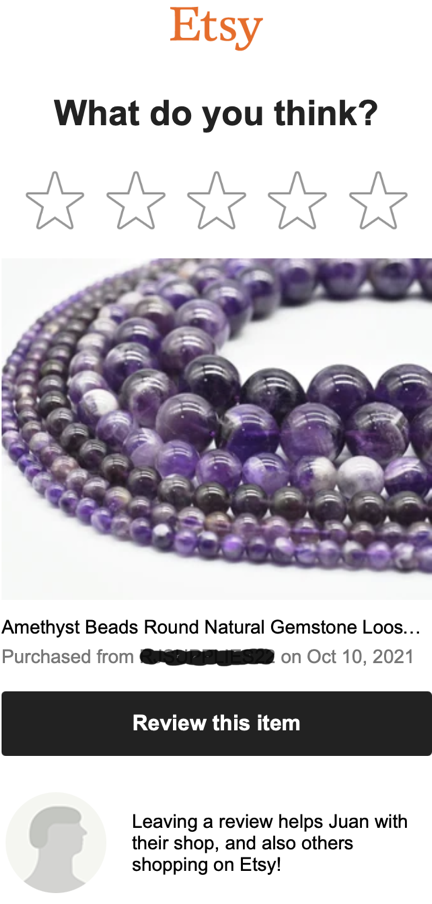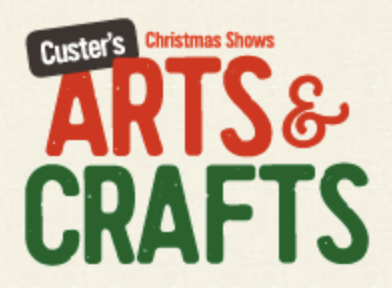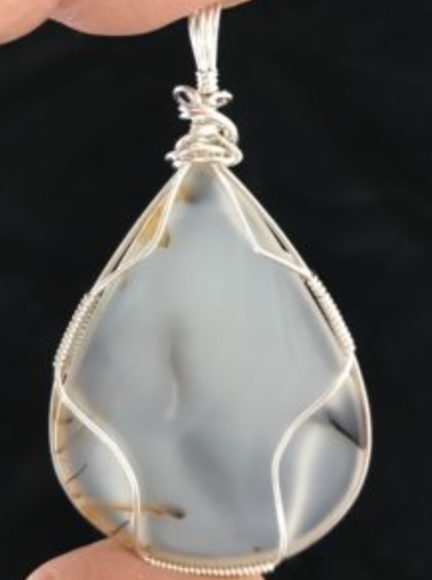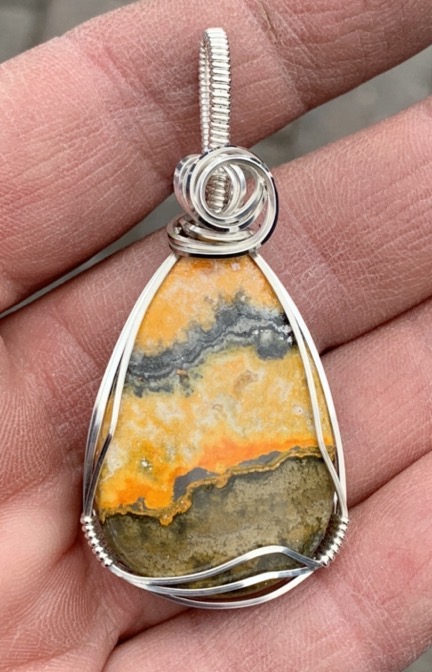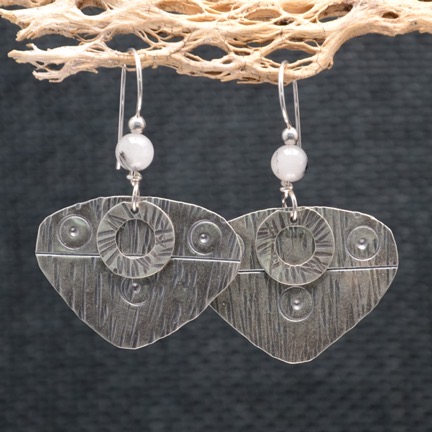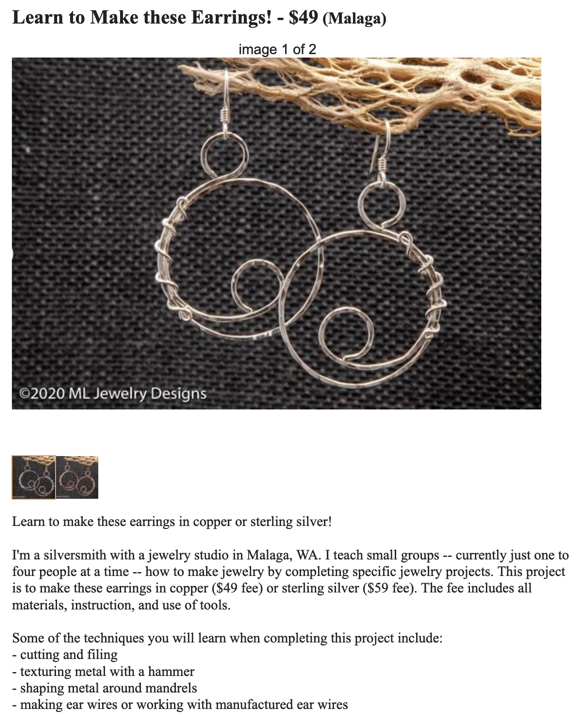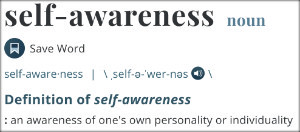Some reflections on the danger of COVID misinformation and conspiracy theories.
The other day I saw a business owner I hadn’t seen since early in the days of the COVID pandemic. His name is Mike. His business is down in Yakima, WA and I’m pretty sure that the last time I saw him was when I was on my way back from my southern migration in mid March 2020.
The last time I saw Mike
Back then, the pandemic was still new. I’d done a bunch of art shows in Arizona and was scheduled to do one in Borrego Springs, CA on the second weekend in March 2020. I’d voiced some concern to my artist friend, Janet, who was also going to do the show, wondering whether it would be cancelled. She thought I was nuts — that’s how new COVID was. So we both drove all the way out to Borrego Springs, camped out in the desert, and were informed, the day before setup, that the show had been cancelled.
This told me what I’d already suspected: the pandemic was real and it was serious.
I headed home and stopped in Yakima along the way to pick something up at Mike’s shop. He was spewing conspiracy theories as usual — he’d always shared what he learned from far right wing radio talk shows with me and I always tuned them out — suggesting that COVID wasn’t real.
I got what I needed and hurried home.
I don’t like to disagree with folks who share what I think are crazy beliefs — it just isn’t worth it — but I don’t like to hang out with them, either. It’s almost as if I’m worried that some of that crap will take root in my brain and start rotting it.
Mike’s Bout with COVID
🧵Saturday marks 1 year since I was admitted to the ICU w/ acute respiratory failure. Here are 26 things you (probably) didn’t know about being hospitalized with severe Covid, one for each day I was in there. (Maybe share these with your unvaccinated loved ones.) 1/29
— Stoli (@CRStoli) November 11, 2021
Want to read a real story from a COVID survivor? This Twitter thread has plenty of first-hand details.
Fast forward to Monday of this week. I needed another item from Mike’s shop and was already down in Pasco for an art show that weekend. Instead of going straight home, I headed over to Mike’s place in Yakima. I wore a mask when I went inside and, although none of the employees were wearing masks when I showed up, they all put them on right away. I admit that surprised me. Yakima is one of Washington’s COVID hot spots for a reason.
I talked to Mike. He wasn’t vaccinated, of course. He reported that he’d gotten COVID and told me all about the symptoms. How quickly it had come on, how he’d lost his sense of taste and smell, how he’d had a cough and some trouble breathing. He didn’t need hospitalization — or, if he did, he didn’t tell me about it. But since getting COVID, he was having issues with his arms. Pain, mostly, and lack of strength. It had been going on for months. His doctor had tried several pain medications and none helped — although ibuprofen, which I suggested, did. He claimed his doctor told him not to take it long term because it could “mess him up.” So he was living in constant pain after having COVID.
He was suffering from Long COVID.
He knew it. He admitted it. He said the good thing was that now he was immune to COVID so he wouldn’t be getting the vaccine. That was good because there was an Israeli study….
He went on a bit before I interrupted him and told him I had to go. (My fear of brain rot had kicked in.)
It Really Isn’t Worth It
Despite his crazy beliefs, I kind of like Mike. I don’t want him to be sick. I want him to get vaccinated. I want him to understand that what he’s reading isn’t true or is, at the least, misleading.
So when a FactCheck.org article related to misinformation about the Israeli vaccine study crossed my Twitter feed, I sent him a link in a text message.
You mentioned Israeli studies about vaccine efficacy. I hope you’re getting FACTS and not misleading information. Here’s an article from FactCheck.org about a misleading video about the Israeli studies. https://www.factcheck.org/2021/11/scicheck-video-questioning-vaccine-efficacy-pushes-falsehood-about-israel-data/
It got the response I should have expected. I can imagine him typing all this crap into his phone, feverishly trying to convince me that an organization I trust and respect is “bullshit.” I didn’t even read it all. In fact, I didn’t even know until just now, when I selected it to copy and paste, that he’d written so much; it didn’t show up in the text window. But here it is, in its entirety:
Did you know that fact-check.org is a bullshit site ? Deep into censoring, tainted by big Pharma money and tied to Facebook ?
No I’m not misinformed . I know too many Doctors, and RN’s who I talk to that agree with me . I don’t care if someone wants to get the Jab or not. I’ll take my chances with my natural antibodies, could I get sick again, yes, just like those who got the jab . I’m on the same page as Rand Paul. At least I won’t have to worry about all the side effects people have been experiencing.
I read all news left and right and it amazes how gullible and naive people are , for example just look at how many people fell for that phony Russian collision bullshit . You know, the ones that ONLY get their news from CNN or MSNBC, you know the type. The totally misinformed . Now that made up bullshit is coming to light . Durhams investigation has proven it to all be a total fabrication .
As far as studies go to the efficacy of natural antibodies there have been 96 studies so far .
Japan is vaccinating and the Japanese government recently made Ivermectin available too . Since Ivermectin was made available New cases have plummeted from over 6000 per day to around 100 . If used in the early stages it is very effective . You can always tell who the misinformed are when you mention Ivermectin . If Horse Dewormer comes out of their mouth you can tell they are misinformed . Ivermectin was distributed to 300 million people in Africa by Merck for over 30 years, billions of doses taken safely . It is considered by the WHO as one of the ten most important drugs in existence . In 2015 the inventors won a Nobel prize for the good they did . River Blindness, elephantiasis and a host of other disease was eradicated by its use . There is also the Veterinarian Ivermectin medicine .
Believe what you want . I won’t believe anything coming from sources like factchecker.org and Wikipedia . Way too biased for me .
My response was short and simple:
Believe what you want. Sorry to bother you.
It’s kind of heartbreaking.
But there’s one thing I should have told him, one thing I realized after that final text to him.
He didn’t get vaccinated and he got COVID. I did get vaccinated and I mask up in public and I haven’t gotten COVID. Coincidence? I don’t think so.
Another Neighbor Dies
Last week, another one of my neighbors died of COVID.
Understand that I live on a private road with only about 25 lots and maybe 20 homes. In total, fewer than 50 people live here. Yet we’ve lost two of them to COVID.
The first was an older guy who lived by himself and was not well-liked in the neighborhood. I don’t know for certain what his personal beliefs were, but I know he was friends with another anti-vax neighbor who he visited every morning for coffee. I’d see him drive by with his dog — the same one who killed my chickens twice — barking his brains out the pickup truck’s window.
The story that went through the neighborhood is that he got COVID and was hospitalized. He was in for quite a while. They were ready to release him when they discovered he had pneumonia. So they kept him longer. Then, before they could release him, he had a stroke — could it have been caused by a COVID-related blood clot? I don’t know. They sent him off to the Seattle side of the mountains for rehab and he died a while later.
Keep in mind that all this happened before there was a vaccine. Sure, he could have kept safe by wearing a mask, maintaining his distance from others, etc. But he apparently didn’t think that was necessary. Instead, he carried on his morning coffee routine with the other anti-vax neighbor, a man who goes off to work every day and is doubtlessly in contact with many people. And who knows what kind of other socializing he did?
The more recent death was infinitely sadder. The man who died was also unvaccinated, but he was a doctor so I honestly don’t understand why he didn’t get vaccinated. He was in his 50s and had recently built his home. He had a wife and grown kids and probably grandkids. He was in that time of life when the hard work is done and retirement is on the horizon. The time we supposedly work hard for our entire lives.
He and his wife both got COVID. They both wound up in the hospital. She recovered. He didn’t. He went into the ICU. I don’t know if he was intubated — I didn’t ask. But he didn’t come out.
I knew he was dead when I came home from shopping one day and saw the florist’s delivery van coming down the road from the direction of their home. Another neighbor confirmed it later. I was asked to help spread the news among our other neighbors, including the vaccinated couple across the street who had gotten relatively mild cases of COVID from co-workers and the pediatrician at the hospital who likely already knew about our neighbor’s death.
What I find so sad about his death is how preventable it was. A shot or two in the arm may have prevented his COVID infection and likely would have prevented death even if he did get infected. But somewhere, he’d read something that convinced him it was better to not get the vaccine. Did he regret that decision in the days and weeks leading up to his death? I don’t know. I hope his wife, family, and close friends learned something.
I hope my other neighbors learned something. But I know they didn’t. Apparently, these people can’t believe reality until it strikes them.
Hell, even Mike doesn’t believe — and he’s actually suffered through it.
The Pandemic Isn’t Over
This past weekend, I sold my jewelry at an art show in Pasco, WA. The venue was indoors and masks were required. I normally work at home and wear a mask only when indoors in public — for example, when shopping — so I wasn’t used to wearing one for 10 hours straight. I did not enjoy it.
I’m angry that I had to do it.
I’m not angry with the governor or the venue operator or the show promoter who required it. They are doing what they have to do to keep us safe. I appreciate that.
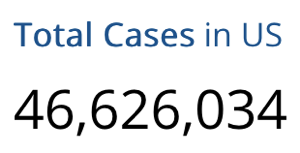
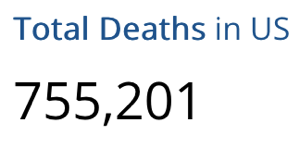
As of today, the CDC reports more than 46 MILLION cases of COVID-19 in the US and 755,201 deaths in the US due to COVID-19.
Instead, I’m angry with the stupid, gullible, misinformed idiots who doubt COVID is real or serious when people are getting struck down with it every day. People who think the vaccine does more harm than good when all evidence proves otherwise. People who are keeping the virus alive and allowing it to mutate by giving it a place to thrive and grow — their own bodies — because they’re not taking logical, science-based precautions.
We are nearly two years into this pandemic and it is still affecting our lives. And it will continue to affect our lives until the misinformation and conspiracy theories about it stop.
Do you want this to be over? Get vaccinated. Wear a mask when among strangers or unvaccinated friends. Don’t let your guard down. Stop believing the bullshit. Let’s end this already.

